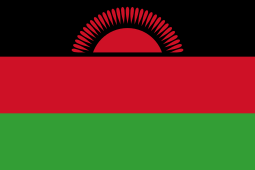Railway coupling by country
The railcar couplers or couplings listed, described, and depicted below are used worldwide on legacy and modern railways. Compatible and similar designs are frequently referred to using widely differing make, brand, regional or nick names, which can make describing standard or typical designs confusing. Dimensions and ratings noted in these articles are usually of nominal or typical components and systems, though standards and practices also vary widely with railway, region, and era. Transition between incompatible coupler types may be accomplished using Dual or Compromise couplings or a Barrier wagon.
Coupler types
- ABC, also known as AutoBuffContact coupler[1][2]
- Albert coupler
- Bell+Hook coupler
- BSI, also known as BergischeStahlIndustrie coupler
- Buffers+Chain, also known as British, Buffers+Screw, English, EU, Link+Hook, UIC, UK coupler
- CenterBuffer+Chains coupler
- GF coupler
- Henricot coupler
- H2C coupler
- Janney, also known as AAR, APT, ARA, CB, CenterBuffer, Knuckle, MCB, TightLock, coupler[3][4]
- JohnstonLink+Pin coupler
- Link+Pin coupler
- Miller coupler
- Norwegian, also known as Chopper, Jones coupler
- Pin+Cup coupler
- SA-3, also known as SovietAuto-3, AK69e, CA-3, CоветскаяАвто-3, Russian, Willison coupler
- Scharfenberg, also known as Dellner, SchaKu, Voith coupler
- Shibata coupler
- Ward coupler[5]
- WedgeLock, also known as London, Tube coupler
Africa

- Russian couplers[6]

- SA3 coupler[6]

- CBC couplers[13]

- AAR couplers[14]

- AAR and Norwegian couplers on Narrow Gauge railways
- AAR Alliance couplers on Standard Gauge railways

- AAR couplers[15]

- like Senegal

- AAR couplers
- Russian couplers[16]

- English couplers[17]

- AAR couplers on modern 1m435 Standard Gauge railways
- ABC couplers on legacy 1m067 Narrow Gauge railways
- ABC couplers on legacy 0m762 Narrow Gauge railways

- English couplers on freight and passenger stock
- Norwegian couplers on Indian Stock[18]

- Buffers-and-chain from 1859 to 1873.[19]
- Johnston link-and-pin from 1873 to 1927 on Cape gauge, from 1906 on 2 feet (610 millimetres) narrow gauge in Natal.[20][21]
- Bell-and-hook from 1902 on 2 feet (610 millimetres) narrow gauge in the Cape of Good Hope.[21][22]
- AAR knuckle wide use from 1927 on Cape gauge. The first application of these couplers in what is now South Africa was in 1904 by the ultra-progressive Central South African Railways (CSAR) on their rolling stock for the "Limited Expresses" between Johannesburg and Pretoria.[23][24][25][26]
- Willison from 1973 on 2 feet (610 millimetres) narrow gauge in the Cape Province.[21]
- WABCO N-Type from 1984 on 6M EMU rolling stock. Also used on class 8M EMU rolling stock built from 1988.
- Scharfenberg from 2012 on Gautrain, from 2016 on new PRASA EM01 commuter stock.

- Norwegian couplers on 1,000 mm (3 ft 3 3⁄8 in) gauge track[8]
- AAR couplers on 1,067 mm (3 ft 6 in) gauge track
- AAR couplers on 1,435 mm (4 ft 8 1⁄2 in) gauge track.
Asia

- AAR couplers on 5 ft 6 in (1,676 mm) Stock
- Norwegian couplers on 1,000 mm (3 ft 3 3⁄8 in) Stock[6]

- AAR couplers on passenger and freight stock
- Scharfenberg couplers on high speed (CRH) and subway trains

- BSI couplers on MTR passenger units
- Tightlock couplers on ex-KCR passenger units
- Dellner couplers on light rail stock
- AAR couplers on freight stock

- English couplers on historic stock
- AAR couplers on modern stock[29]
- Norwegian couplers on 1,000 mm (3 ft 3 3⁄8 in) gauge track[30]
- ABC couplers on narrow gauge stock
- Schaku Couplers in Suburban EMU and DEMU trains
- Scharfenberg Couplers are also used in rapid transit transports like metros

- English, Russian (C-AKv) combo couplers on freight and passenger stock
- Scharfenberg couplers on passenger stock

- English couplers on historic stock
- AAR couplers on freight and passenger stock
- Shibata couplers (based on Scharfenberg couplers) on passenger stock

- AAR couplers on standard gauge stock
- Reduced-size Janney (AAR) couplers on narrow gauge stock
- Scharfenberg couplers on Pyongyang Metro stock

- English, link and pin couplers on historic stock
- AAR couplers on modern stock[33]
- Shibata couplers (based on Scharfenberg couplers) on Subways and metro car

- Norwegian couplers on historic stock
- AAR couplers on modern stock
- Scharfenberg couplers on ERL, LRT, MRT and Monorail.

- English couplers on historic stock
- AAR couplers on modern stock[34]

- Russian couplers on domestic stock (with side buffers on passenger coaches)
- English couplers on Euro Stock (exchanged on the border)
- Scharfenberg couplers on some passenger unit trains (Velaro, Desiro) and on all subway systems

- Scharfenberg couplers for the Mass Rapid Transit

- AAR couplers on all SRT rolling stock
- Norwegian couplers on historic stock
- Scharfenberg couplers on mass-transit trains
- Wedge Lock, Ward couplers on London Underground stock
- Narrow gauge lines use a mixture of couplings.
Europe

- English couplers on standard gauge stock
- Scharfenberg couplers on passenger units
- Bosna or Scharfenberg couplers on narrow gauge stock
.svg.png)
- GF on most multiple units
- Henricot couplers on some EMU's
- English couplers on locomotives, passenger carriages and goods waggons
- Scharfenberg couplers on high speed trains

- English (UIC) couplers on passenger cars and most freight cars and on historical locomotives
- Russian SA3 couplers on Russian cars and some heavy-duty freight cars
- "Unilink" (SA3 clone with UIC-style screw link) or "Vapiti" (SA3 clone with movable link arm for English couplers) couplers on the majority of locomotives; compatible with SA3 and English (UIC) center hook
- Scharfenberg (some made by Dellner) couplers on multiple unit passenger stock

- English couplers on freight and passenger stock
- Scharfenberg couplers on passenger stock (multiple units and high speed trains only)
- Russian couplers on unit ore trains

- English couplers on freight and passenger stock
- Scharfenberg couplers on passenger stock
- AK69e and C-AKv couplers on unit ore trains
- AK69e and Russian SA-3 mixed in trains via Mukran ferry terminal
- Scharfenberg or central buffer couplers on narrow gauge stock

- English on freight and passenger stock
- Scharfenberg on passenger stock
- Center buffer and side chains on narrow gauge stock

- English on freight and passenger stock
- Scharfenberg on multiple units (in some cases jointly with side buffers)
- BSI with side buffers on BDVmot electric multiple units
- Link-and-pin on narrow gauge stock

- English couplers on standard gauge stock
- Scharfenberg couplers on some EMU/DMU and FS Class E.464

- English couplers on freight and passenger stock
- BSI, Scharfenberg couplers on passenger stock
- Russian couplers on unit ore trains

- English couplers on freight and passenger stock
- Norwegian couplers on historic stock, narrow gauge only
- Scharfenberg couplers on passenger stock (multiple units)
- Russian SA3 couplers on unit ore trains (Ofoten Line)

- English couplers on freight and passenger stock
- Scharfenberg couplers on passenger stock
- Russian couplers on unit ore trains and Russian interchange stock

- English couplers on freight and loco hauled passenger stock
- Scharfenberg couplers on multiple unit passenger stock

- English on freight and passenger stock
- Scharfenberg on Desiro multiple units and some ex-German rail buses
- Link-and-pin on narrow gauge stock

- Russian SA3 couplers on domestic stock (with side buffers on passenger coaches)
- English couplers on Euro Stock (exchanged on the border)
- Scharfenberg couplers on some passenger unit trains (Velaro, Desiro) and on all subway systems

- English couplers on freight and loco hauled passenger stock
- Scharfenberg couplers on multiple unit passenger stock
- Alliance couplers on freight stock in narrow gauge
- BSI couplers on multiple unit passenger stock (only in Catalonian Railways: FGC)

- English couplers on freight and passenger stock
- Scharfenberg couplers on passenger stock
- Russian couplers on iron ore trains (Iron Ore Line)
- Variant of Norwegian couplers on historic (museum) narrow-gauge stock

- English couplers on standard gauge stock
- GFV, Schwab, Scharfenberg or BSI couplers on passenger units
- AK69e couplers within BLS EW III sets
- GF, GFV or center buffer couplers on meter and narrow gauge stock

- Russian (SA3) couplers on broad gauge rolling stock
- Combined Russian/English couplers on SUW2000 gauge-changing coaches
- Scharfenberg couplers on some EMU trains
- Central buffer and chain couplers on narrow gauge rolling stock

- BSI couplers on most diesel multiple unit types, but also Dellner and Scharfenberg on some more recent types
- AAR Type H "Tightlock" coupling heads on 1970s to 1990s electric multiple units
- Scharfenberg-type coupling heads (often Dellner) on most new electric multiple units, with a variety of electrical connection systems
- English couplings, AAR couplers on some freight stock, most locomotive-hauled passenger stock has a 2⁄3rd size Janney/Buckeye coupler
- Wedgelock, Ward couplers on London Underground stock
- Narrow gauge lines use a mixture of couplings
North America

- AAR couplers on mainline freight and passenger stock
- Link Pin, Miller couplers on historic stock. Converted to AAR couplers 1893~1900 per Safety Appliance Act
- Older city systems have unique coupler designs for transit stock, e.g. H2C couplers on New York City Subway rolling stock
- Scharfenberg couplers on newer light rail and transit systems
- Pin Cup coupler on multiple unit transit stock
- Russian couplers on industrial and mining Stock
Oceania
.svg.png)
- English, Norwegian couplers on historic stock
- AAR couplers on freight and passenger stock
- Scharfenberg couplers on passenger stock

- Norwegian couplers on legacy stock
- Janney couplers on modern freight & locomotives
- Scharfenberg couplers on modern EMUs
South America

- AAR couplers[6]
- English couplers in coaches and locomotives bought from Spain
- Scharfemberg couplers in passenger units bought from Spain

- English couplers[37]

- English couplers[37]
See also
- Barrier vehicle
- Jane's World Railways, lists the coupler(s) used on any railway system
- Rail transport by country
References
- "ABC Couplers". Retrieved 4 November 2014.
- ABC couplers Archived 2009-05-21 at the Wayback Machine
- "Coupler conversion". Retrieved 4 November 2014.
- "Centre Buffer Coupler of AAR type". Retrieved 4 November 2014.
- "Ward coupler". Retrieved 4 November 2014.
- Jane's World Railways 2002–2003 p5
- https://www.bbc.com/news/world-africa-11295533
- "Archived copy". Archived from the original on 2012-03-14. Retrieved 2013-12-27.CS1 maint: archived copy as title (link)
- "Rail pictures". Retrieved 4 November 2014.
- "Rail pictures". Retrieved 4 November 2014.
- http://www.besco.in/clients.htm
- "RailPictures.Net Photo: 3864 Egyptian railways (ENR) EMD G22W-AC at Kafr el Shiekh, Egypt by mohamed". Retrieved 4 November 2014.
- "Il Materiale Rotabile". Retrieved 16 October 2011.
- "The Franco-Ethiopian Railway — Djibouti to Addis-Ababa". Retrieved 4 November 2014.
- "trans zambesia locomotive, AEI, malawi locomotive, nigeria locomotive". Retrieved 4 November 2014.
- SA3 coupler
- "IN NORTHERN AFRICA". Retrieved 4 November 2014.
- "The Railways of Mali and Senegal 2007". Retrieved 4 November 2014.
- Espitalier, T.J.; Day, W.A.J. (1943). The Locomotive in South Africa - A Brief History of Railway Development. Chapter I - The Period of the 4 ft. 8½ in. Gauge. South African Railways and Harbours Magazine, June 1943. pp. 437-440.
- Espitalier, T.J.; Day, W.A.J. (1944). The Locomotive in South Africa - A Brief History of Railway Development. Chapter III - Natal Government Railways (Continued). South African Railways and Harbours Magazine, September 1944. p. 669.
- Suid-Afrikaanse Vervoerdienste (South African Transport Services) (1983). Passassierswa- en Trokhandboek (Passenger Carriage and Truck Manual), Vol 1, Hoofstukke 1-15 (Chapters 1-15). South African Transport Services, 1983. Chapter 13.
- Espitalier, T.J.; Day, W.A.J. (1944). The Locomotive in South Africa - A Brief History of Railway Development. Chapter II - The Cape Government Railways (Continued). South African Railways and Harbours Magazine, April 1944. pp. 253-257.
- Holland, D. F. (1972). Steam Locomotives of the South African Railways. 2: 1910-1955 (1st ed.). Newton Abbott, Devon: David & Charles. pp. 51–52, 117–118. ISBN 978-0-7153-5427-8.
- South African Railways & Harbours/Suid Afrikaanse Spoorweë en Hawens (15 Aug 1941). Locomotive Diagram Book/Lokomotiefdiagramboek, 2'0" & 3'6" Gauge/Spoorwydte, Steam Locomotives/Stoomlokomotiewe. SAR/SAS Mechanical Department/Werktuigkundige Dept. Drawing Office/Tekenkantoor, Pretoria. pp. 6a-7a, 25.
- At least some versions of the automatic couplers used in South Africa follows the Henricot coupler patent and not the AAR version. The following note is given on drawing CME10719-478/68 "Automatic Coupler, type MS (127 mm x 140 mm)", also referred to as SASKOP (Suid-Afrikaanse Spoorweë Koppelaar - South African Railways Coupler): "The copyright in this drawing vests in "Société Anonyme Usines Emile Henricot of Court-Saint-Étienne", Belgium. The said company is also the owner of the patent in respect of the automatic coupler covered by this drawing."
- Pivnic, Les. "Soul of A Railway, System 7, Natalspruit to Vereeniging – Part 1".
- Locopage
- "The Hindu : Tamil Nadu / Tiruchi News : Rs. 80-crore target for railway spares export". Retrieved 4 November 2014.
- "Centre Buffer coupler of AAR type". Retrieved 4 November 2014.
- "[IRFCA] Indian Railways FAQ: Rolling Stock – II". Retrieved 4 November 2014.
- Jane's World Railways 1969/1970 pp 594/595
- http://www.ajg41.clara.co.uk/iraq/links.html
- Railway Gazette International Aug 2008 p517
- "Centre Buffer coupler of AAR type". Retrieved 4 November 2014.
- Jane's World Railways 1969/1970 pp 501 thru 504
- Railway Gazette International April 2009, p61
- "trains-worldexpresses.com". Retrieved 4 November 2014.
External links

This article is issued from Wikipedia. The text is licensed under Creative Commons - Attribution - Sharealike. Additional terms may apply for the media files.